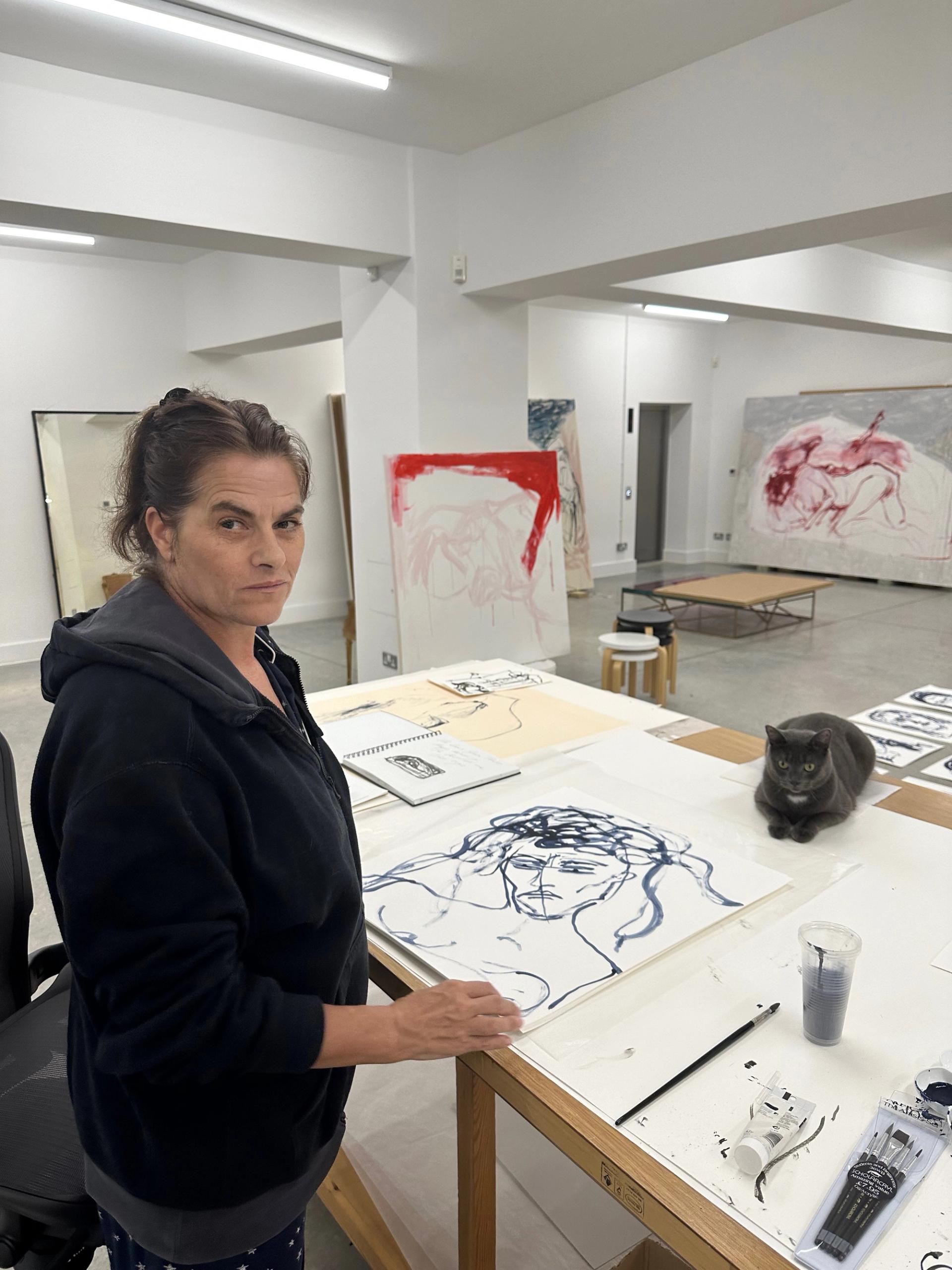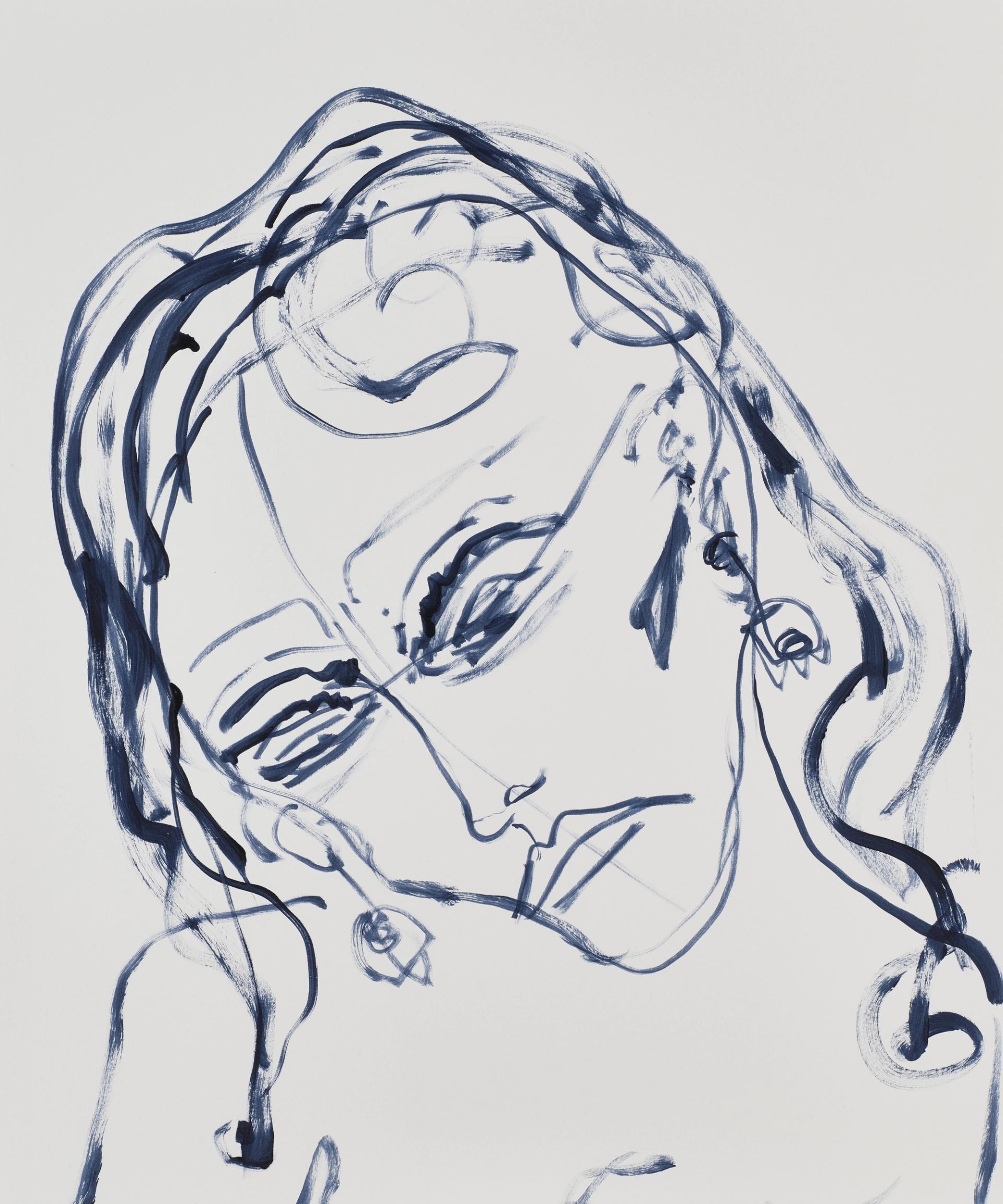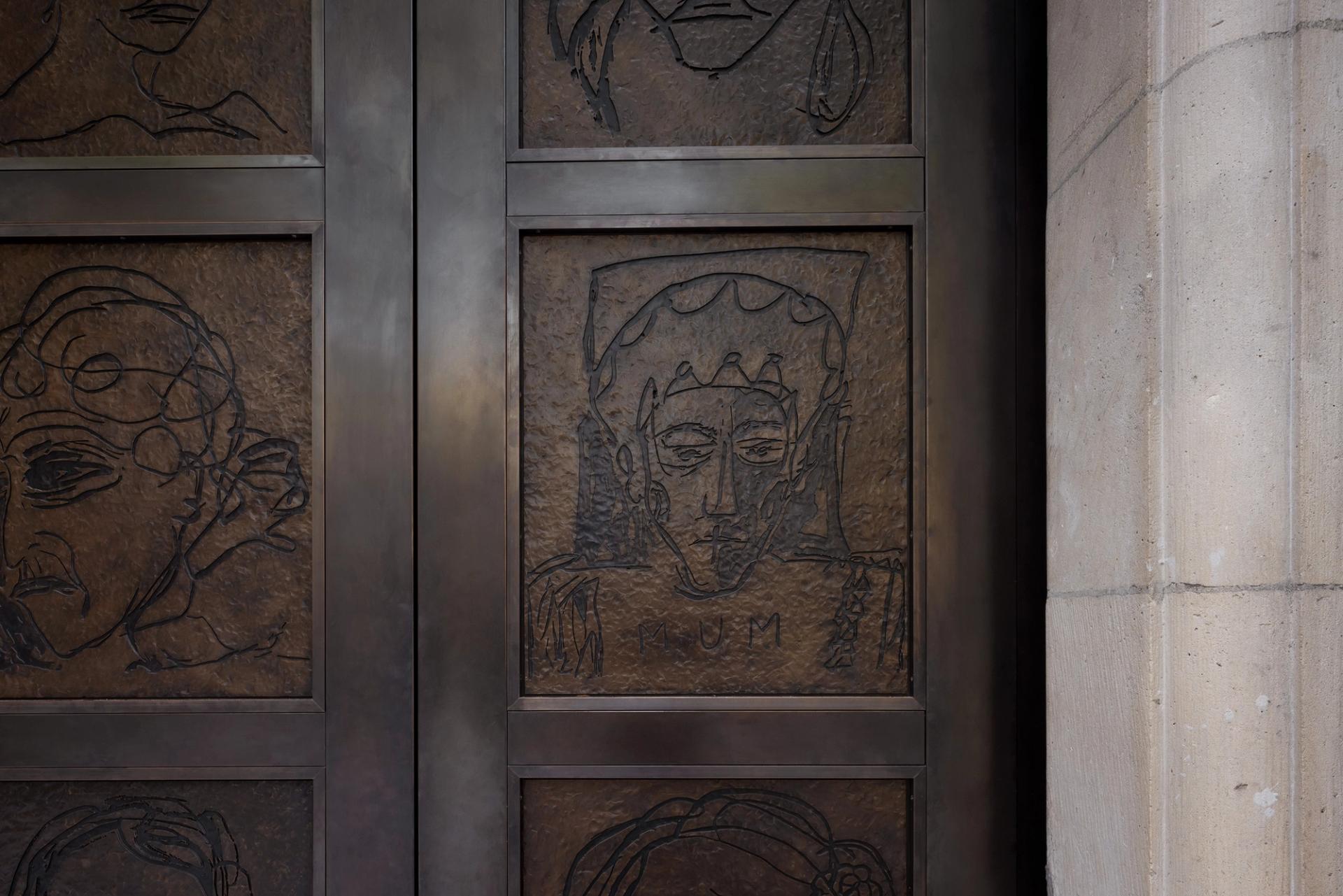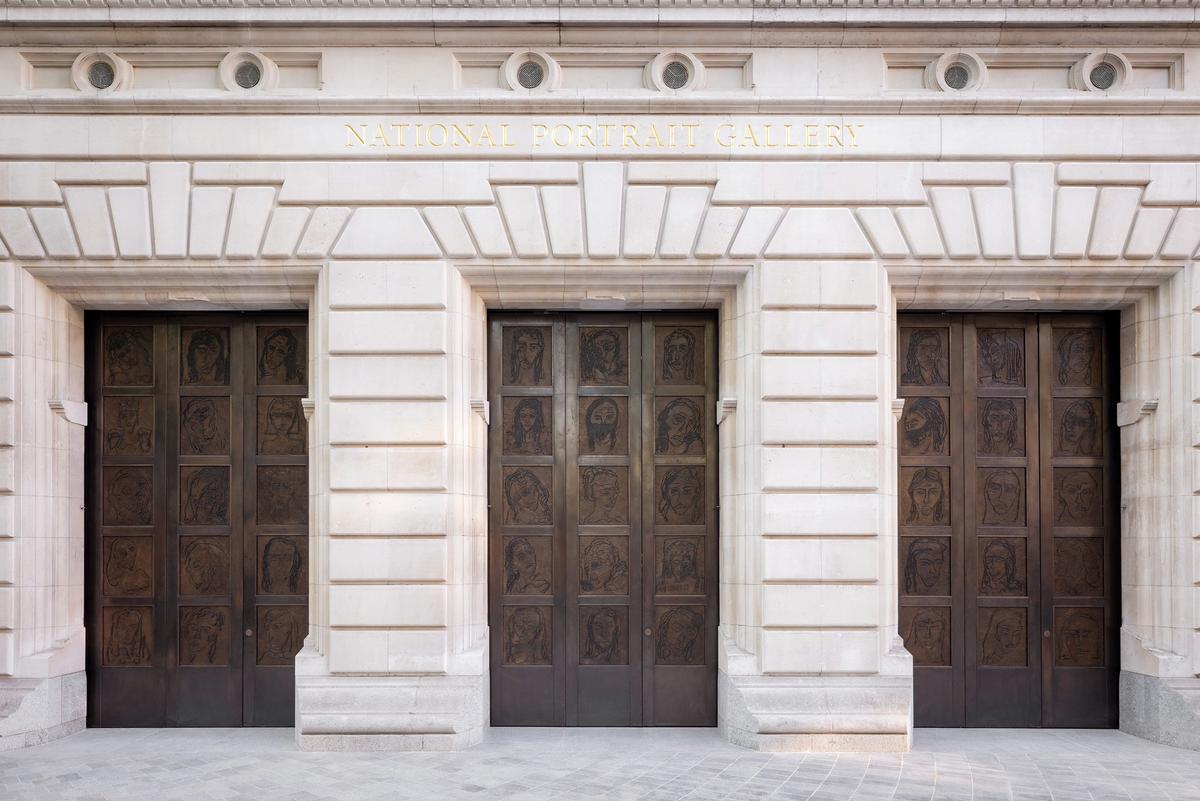Visitors to the newly reopened National Portrait Gallery (NPG), in London, will this week be faced with a very different sort of portraiture—for the doors of the institution have been transformed into 45 faces, each created by Tracey Emin.
The British artist, a Turner prize nominee and a Royal Academician, was commissioned by the gallery to create The Doors (2023). Emin has produced 45 female faces, each hand-drawn in her signature gestural style. The portraits were then cast in bronze and now sit within the grid of panels that span the three new doors in the NPG’s newly created forecourt. The commission was kept secret until the gallery’s announcement today.
With these new multi-panelled bronze doors, Emin is referencing a grand art historical tradition that embraces both Lorenzo Ghiberti’s Renaissance bronze doors in Florence, Italy, and Auguste Rodin’s monumental Gates of Hell.
The gallery, which opens to the public on 22 June after a three-year closure, commissioned Emin in an effort to “balance the imposing façade, with its roundels of eighteen men from British history,” said Nicholas Cullinan, director of the National Portrait Gallery, in a statement shared with The Art Newspaper.
Before the refurbishment, the gallery’s façade exclusively depicted prominent male figures from British and European history. The Portland stone busts depict 18 male writers, historians and artists, among them Horace Walpole, Hans Holbein the Younger, Anthony van Dyck and Sir Joshua Reynolds.
“Women in history are greatly underrepresented,” Tracey Emin said in a statement. “I didn’t want to depict specific or identifiable figures. I felt like the doors of the National Portrait Gallery should represent every woman, every age and every culture throughout time.”

Tracey Emin creating The Doors © Harry Weller, courtesy National Portrait Gallery
Throughout her career, Emin has challenged conventional notions of feminine beauty, identity and self-expression, the legacies of which have traditionally been on show at the NPG.
Emin was born in Croydon, south London, in 1963, and gained prominence in the early 1990s amid the Young British Artists movement. From the outset, her artistic practice eschewed traditional portraiture's polished and idealised representations in favour of a more expressionist form of portraiture. Emin has primarily worked in self-portraiture, turning her own psyche and experiences into the subjects of her work.
Emin remains best known, perhaps, for her 1998 work My Bed, which was exhibited at the Tate in 1999 before being one of the short-listed works for the Turner Prize that year. The installation was in the legacy of "ready-made" art; Emin's own bed, exhibited to the public after she had spent several weeks in it, drinking, smoking, eating, sleeping and having sex amid a period of emotional turmoil.

Tracey Emin sketch for The Doors © National Portrait Gallery
By sharing her own vulnerabilities in such a way, Emin’s artwork challenged the long-standing notion, often upheld in the NPG, that portraiture should be reserved for the elite, or should focus on the physical likeness of the conventionally beautiful.
For the NPG commission, Emin used herself as "a mental template”, the artist says. “But the end result is many different women, some that exist in my mind and some that perhaps exist in reality here and now, as well as from the past,” she says. “It’s up to the viewer to discern what they feel and what they see or who they see.”
The portraits now visible on the panels of the NPG’s doors were cast in bronze at an east London foundry which Emin often uses. Originally painted in acrylic on paper, Emin’s drawings were then transcribed onto the bronze panels—although the artist’s finger and thumbprints remain visible in metalwork.

Exterior of The Doors commission at the National Portrait Gallery © National Portrait Gallery
Emin’s The Doors commission is part of a broader effort on behalf of the NPG’s leadership to create a better gender balance in the NPG’s collection. During the gallery’s closure, more than 50 works were acquired and commissioned. These include the earliest large-scale portrait of an English woman, Lady Margaret Beaufort, dating back to circa 1510. More recent acquisitions include Peitaw (2017), a self-portrait by the Gambian-British artist Khadija Saye, who died as a result of the Grenfell Tower fire in London in June 2017.
Visitors to the new NPG will find that 36% of portraits on display across the entire gallery are now women. This figure rises to 48% in post-1900 galleries.


